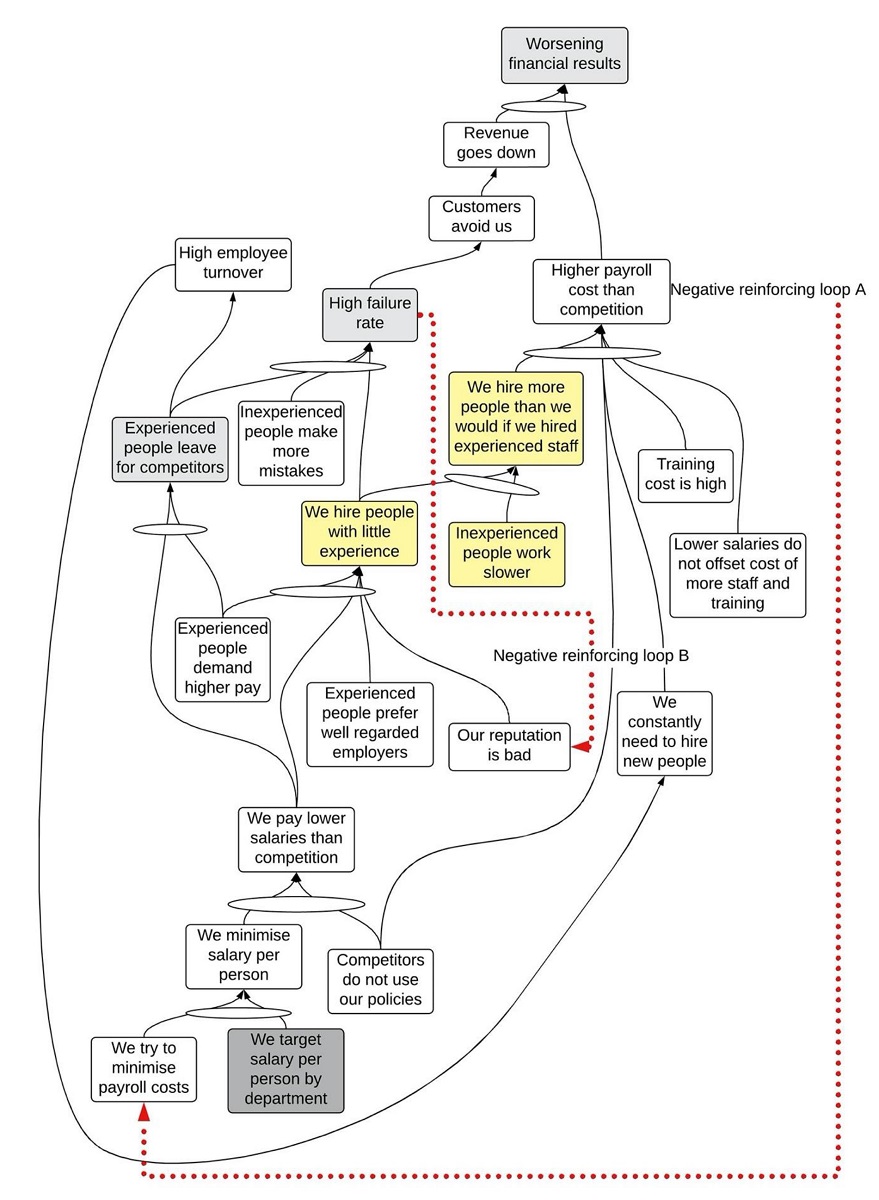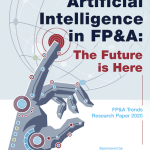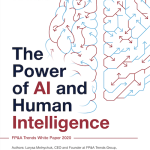The role of Financial Planning and Analysis (FP&A) leaders has evolved, and they must adapt to lead their teams effectively...
 Large language models such as ChatGPT are among the most important new technologies of our time. The big difference between Artificial Intelligence (AI), as we commonly know it in FP&A and the new models is how we can use normal language to communicate with the latter, almost as if they were human beings but equipped with a vast repository of knowledge.
Large language models such as ChatGPT are among the most important new technologies of our time. The big difference between Artificial Intelligence (AI), as we commonly know it in FP&A and the new models is how we can use normal language to communicate with the latter, almost as if they were human beings but equipped with a vast repository of knowledge.
Until now, when it comes to FP&A, AI has been used almost exclusively in quantitative modelling. Quantitative models require explicit, structured data of adequate quality. This limits their usefulness, for most of the information we use in the decision-making process is qualitative, often tacit knowledge, which resides in our brains based on experience, insights and relationships. While our quantitative modelling skills keep improving, not least with the assistance of AI, our qualitative analyses still suffer from a serious lack of structure and rigour, which negatively impacts our decisions. With the advent of large language models, this is now changing. If FP&A takes advantage of the possibilities offered by those new models, we can vastly improve our analysis and, thus, our decision-making.
Qualitative Analysis - The Logical Thinking Process
A wealth of frameworks are available when it comes to qualitative analysis for problem-solving and strategy formulation. Some are better than others. Here, I focus on the Logical Thinking Process framework, which I have specialised in. This is a holistic analysis and strategy formulation framework based on two principles. First, to effectively solve persistent systemic problems, the systemic nature of the organisation must be taken into account. Second, effective analysis and decision-making must be based on strict adherence to the rules of logic. The process consists of five steps.
First, we define the system's goal and the required conditions to reach it. We then determine which necessary conditions are not fulfilled and identify the root causes explaining why. The third step is to solve any inherent conflicts that may have been identified in the second step. The fourth step is to map out precisely:
- if and how the solutions identified will ensure that the organisation reaches its goal,
- if further actions are needed, and
- if the proposed solutions may have unintended consequences.
The fifth step is to dive deeper into how the proposed and verified solutions can be implemented.
The Logical Thinking Process relies on strict adherence to the rules of logic. This is what makes it more challenging than most qualitative analysis frameworks. However, it is also key to ensuring the analysis's validity. Without adherence to those rules, cause-effect analysis is likely to result in invalid conclusions that simply confirm our preconceived ideas, in other words, our bias.
The Evolution of FP&A Drives the Need for Better Qualitative Analysis
As FP&A keeps evolving from basic reporting towards Business Partnering, the responsibilities of FP&A professionals change. They must develop a profound understanding of the operational aspects of the business as their role changes from responding to requests for information towards taking a proactive role in analysing various aspects of the enterprise and providing recommendations to managers. And since management decisions are primarily based not only on quantitative but also on qualitative information, FP&A must place a much bigger emphasis on this. In short, effective Business Partnering requires FP&A professionals to partner with managers in improving qualitative analysis.
Historically, qualitative analysis has largely been based on gut feeling rather than a formal systemic approach. All it takes is a quick look at:
- a few corporate statements of vision, mission and values (look out for contradictions),
- a couple of SWOT analyses (look out for overconfidence),
- high-level strategic plans (look out for wishful thinking),
- big project plans (look out for unrealistic deadlines).
In short, once we move into a realm where data and numbers are missing, we more than often end up with contradictory and often meaningless gibberish. The same applies to day-to-day decisions where complex numbers are missing, and we have to rely on qualitative analysis.
I can see that rigorous cause-effect analysis is usually omitted when it is most needed. There are two main reasons for this. The first is the lack of a truly structured logical approach. The second is that using a structured logical approach is so intellectually challenging and time-consuming that most of us never use it, even if we know how to. Again, the value of our qualitative analyses leaves much to be desired.
How AI Helps Us Overcome the Challenges of Logical Analysis
Sketching out a root cause analysis doesn't have to take much time for someone trained. Apart from the actual fact-finding, the truly time-consuming part of the work is:
- scrutinising the analysis,
- looking for missing premises behind conclusions,
- validating logical connections,
- and clarifying the wording of our statements.
The usual approach here is first to do the analysis, then set it aside for a couple of days, review it, have a colleague scrutinise it, present it to the team for review and so on.
This is where large language models will be a game changer. We can now sketch up a rough analysis, type the logical statements we want to be verified into the AI, and get an instant response. We do not have to limit ourselves to individual statements. Using the correct form, we can also type up the whole sequence of logical statements, have the model check it and suggest improvements, clarify where we believe it misunderstands us, ask it to clarify our wording when needed and so on. What we are really doing is partnering up with the large language model to produce a robust analysis in a fraction of the time it would otherwise take.
Current Reality Tree example: Worsening Financial Results
Figure 1: Current Reality Tree: What Leads to Worsening Financial Results
The diagram above shows a logical analysis, a Current Reality Tree, of how a faulty KPI worsens financial results at a specialised hospital. Focusing on one part of the analysis, coloured yellow, we ask ChatGPT to evaluate if the premises are sufficient to produce the result.
Figure 2: Identifying the missing premise with Artificial Intelligence
In a couple of seconds, the model identifies a missing premise. In order to conclude that we have to hire more people, we must add the premise that we do not already have excess staff. We see the original syllogism to the left, and on the right, we have the one improved based on the input from ChatGPT. This additional premise is, in fact, critical. If our assumption of not having excess staff is indeed faulty, this may be the critical root cause behind the hiring spree.
We might say this should have been obvious the whole time. Still, the fact is that when we qualitatively analyse a situation, we always make unstated assumptions, and very often, we do so unknowingly. We are always biased to assume things we do not really know. The language model provides us with another view and acts as an unbiased observer with an excellent ability to scrutinise logical statements.
When we consider the extent to which qualitative analysis impacts our decision-making, the lack of structure and quality, and the time and effort required to take it to the next level, we should immediately realise the game-changing nature of AI-assisted qualitative analysis.
The Virtuous Cycle of Using AI to Improve Our Thinking
AI will not think for us. Believing that it will is the most dangerous trap its users can fall into. On the contrary, the advent of large language models requires us to become much better thinkers. We can and must use them to improve our analytical skills, and the better those become, the better we become at using the models to improve our skills even further. This is the virtuous cycle offered by the new large language models. All we need to start is a well-structured methodology and an understanding of and training in using the rules of logic.
FP&A specialists must take up this challenge not only to improve their own analyses but, even more importantly, the FP&A function should take the lead in assisting all those with decision-making responsibilities to embrace the possibilities large language models offer. The ability to effectively use this new technology, thereby entering the virtuous cycle of constantly improving our ability to think logically, may become the most important key to success in management and FP&A much sooner than most of us realise today.
Subscribe to
FP&A Trends Digest

We will regularly update you on the latest trends and developments in FP&A. Take the opportunity to have articles written by finance thought leaders delivered directly to your inbox; watch compelling webinars; connect with like-minded professionals; and become a part of our global community.








